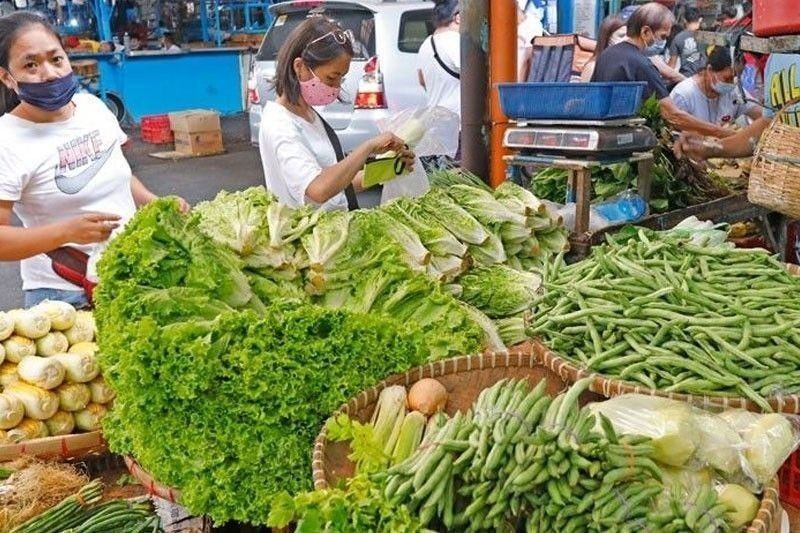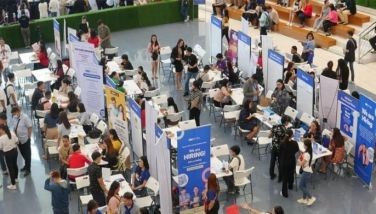Philippines faces elevated inflation risks

MANILA, Philippines — The Philippines is the only emerging economy in Asia that is still facing elevated inflation risks amid the country’s vulnerability to supply-side shocks, according to economists.
In a report, Nomura chief economist Sonal Varma and Asian economist Si Ying Toh said the Philippines has the second highest inflation pressure in Asia, next to Singapore, based on the aggregate scorecard for inflation pressure.
The authors said inflationary pressures throughout emerging Asia appear low, with Indonesia facing the least inflationary pressure.
“They also show that the Philippines is the only emerging market Asian economy still facing elevated inflation risks, because of its higher vulnerability to supply-side inflationary shocks that have spilled over more broadly and will likely unwind only gradually, in our view,” Varma and Toh said.
Philippine inflation averaged 5.8 percent during the seven-month period, still above the two to four percent target range set by the Bangko Sentral ng Pilipinas (BSP) despite easing for six straight months to 4.7 percent in July after peaking at 8.7 percent last January.
The central bank is confident that inflation will ease to within the target range and may settle at an average of 3.4 percent in the fourth quarter.
However, due to upside risks, the BSP raised its inflation forecasts to 5.6 percent from 5.4 percent for 2023, 3.3 percent from 2.9 percent for 2024 and 3.4 percent from 3.2 percent for 2025.
“Disinflation is currently underway in Asia, in line with our expectations, but upside risks are also emerging from strengthening El Niño conditions and growing food protectionism, which could lift food prices, an important driver of regional inflation. Against this backdrop, the response from central banks depends crucially on whether there are risks of generalization,” they said.
The BSP has maintained a hawkish pause by leaving key policy rates untouched since May this year after a cumulative 425-basis-point hike between May last year and March this year to tame inflation and stabilize the peso that slumped to an all-time low of 59 to $1 last October.
Nomura believes that all Asian central banks have finished their hiking cycles, although it also suggests that policy easing can be slower in developed Asia than emerging Asia.
“Normatively speaking, our underlying inflation-real rate framework suggests the need to keep policy tight in Singapore, neutral in the Philippines, India, Korea and accommodative in Thailand and Indonesia,” the authors said.
After an extended pause this year, Nomura said rate cuts would start in South Korea in January next year, followed by India in February, as well as the Philippines and Indonesia in March.
ING Bank senior economist Nicholas Mapa said recent developments could derail the current slowdown of inflation back to within target by the fourth quarter, particularly with price pressures for key commodities flaring up again.
In a report, Mapa said that past episodes of high inflation in the Philippines have been driven in large part by supply-side issues.
Mapa said the Philippines relies on imports from neighboring economies because local rice production is inadequate to meet domestic demand.
Likewise, he added that the Philippines also depends on imported energy for power generation and transport, highlighting how vulnerable the economy is to sharp fluctuations in global energy prices.
According to Mapa, rice, electricity and transport account for a combined 23.4 percent of the consumer price index (CPI) basket.
However, he said the crucial three items in the CPI basket accounted for 41 percent of inflation for 2022, highlighting the importance of stabilizing price movements for these key commodities.
“Given their weight in the CPI basket and the country’s dependence on imports of rice and energy, any sharp upticks for the so-called crucial three could spell a renewed flare up for Philippine inflation,” Mapa warned.
Due to the disappointing 4.3-percent gross domestic product (GDP) growth in the second quarter , the Dutch financial giant now expects a further delay in the rate cut by the BSP that was originally projected at the first quarter of next year.
“However, if we continue to see rice and energy prices tick higher in the coming months, we could see BSP delaying its planned easing to mid-2024,” Mapa said.
Meanwhile, Moody’s Analytics said the BSP may be encouraged to lower its policy rates as soon as inflation reaches its target range after moderating rapidly since the start of the year.
“In economies that have slowed recently and where inflation has rapidly moderated, such as in the Philippines and South Korea, central banks may be
encouraged to lower their policy rates as soon as inflation reaches their target range,” Moody’s Analytics said.
It said the Philippines is still expected to emerge as one of the regional leaders despite the lowering of its GDP growth projections. “Unless fiscal policy or export trade provide an extra boost, growth will remain below the central bank’s target of six to seven percent,” Moody’s Analytics said.
- Latest
- Trending

























